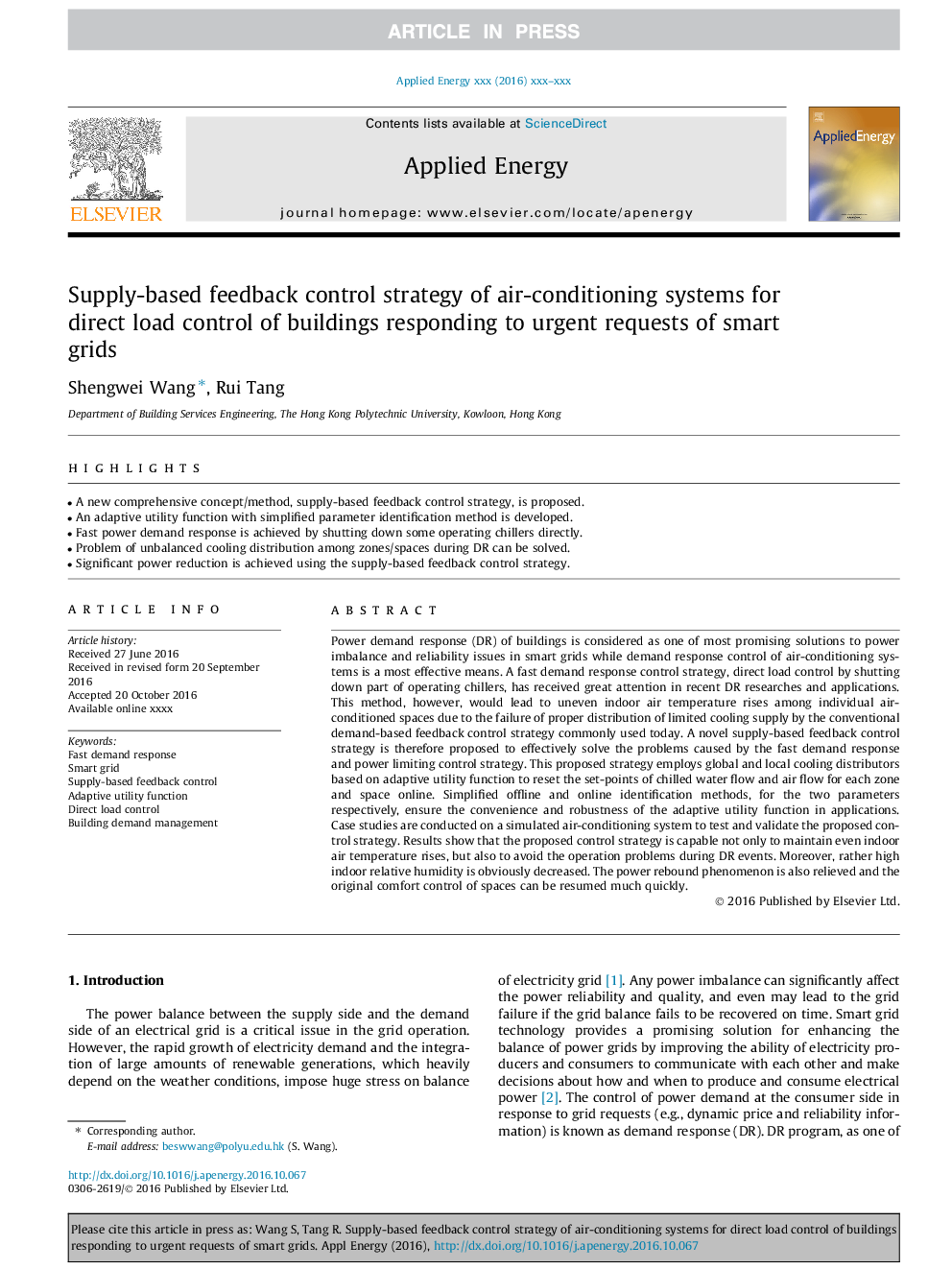| کد مقاله | کد نشریه | سال انتشار | مقاله انگلیسی | نسخه تمام متن |
|---|---|---|---|---|
| 4916030 | 1428089 | 2017 | 14 صفحه PDF | دانلود رایگان |
عنوان انگلیسی مقاله ISI
Supply-based feedback control strategy of air-conditioning systems for direct load control of buildings responding to urgent requests of smart grids
ترجمه فارسی عنوان
استراتژی کنترل بازخورد عرضه سیستم های تهویه مطبوع برای کنترل بار مستقیم ساختمان ها در پاسخ به درخواست های فوری شبکه های هوشمند
دانلود مقاله + سفارش ترجمه
دانلود مقاله ISI انگلیسی
رایگان برای ایرانیان
کلمات کلیدی
پاسخ سریع تقاضای سریع، شبکه هوشمند، کنترل بازخورد مبتنی بر منبع، عملکرد نرم افزاری، کنترل بار مستقیم، مدیریت تقاضای ساختمان،
موضوعات مرتبط
مهندسی و علوم پایه
مهندسی انرژی
مهندسی انرژی و فناوری های برق
چکیده انگلیسی
Power demand response (DR) of buildings is considered as one of most promising solutions to power imbalance and reliability issues in smart grids while demand response control of air-conditioning systems is a most effective means. A fast demand response control strategy, direct load control by shutting down part of operating chillers, has received great attention in recent DR researches and applications. This method, however, would lead to uneven indoor air temperature rises among individual air-conditioned spaces due to the failure of proper distribution of limited cooling supply by the conventional demand-based feedback control strategy commonly used today. A novel supply-based feedback control strategy is therefore proposed to effectively solve the problems caused by the fast demand response and power limiting control strategy. This proposed strategy employs global and local cooling distributors based on adaptive utility function to reset the set-points of chilled water flow and air flow for each zone and space online. Simplified offline and online identification methods, for the two parameters respectively, ensure the convenience and robustness of the adaptive utility function in applications. Case studies are conducted on a simulated air-conditioning system to test and validate the proposed control strategy. Results show that the proposed control strategy is capable not only to maintain even indoor air temperature rises, but also to avoid the operation problems during DR events. Moreover, rather high indoor relative humidity is obviously decreased. The power rebound phenomenon is also relieved and the original comfort control of spaces can be resumed much quickly.
ناشر
Database: Elsevier - ScienceDirect (ساینس دایرکت)
Journal: Applied Energy - Volume 201, 1 September 2017, Pages 419-432
Journal: Applied Energy - Volume 201, 1 September 2017, Pages 419-432
نویسندگان
Shengwei Wang, Rui Tang,
